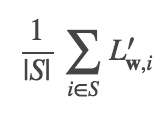A machine learning user needs to have a fair understanding of machine learning concepts and algorithms. Familiarity with mathematics is an important aspect of machine learning. We learn to program by understanding the fundamental concepts and constructs of a language. Similarly, we learn machine learning by understanding concepts and algorithms using Mathematics, which is used to solve complex computational problems, and is a discipline for understanding and appreciating many computer science concepts. Mathematics plays a fundamental role in grasping theoretical concepts and in choosing the right algorithm. This chapter covers the basics of linear algebra and calculus for machine learning.
In this chapter, we will cover the following topics:
- Linear algebra
- Environment setup
- Setting up the Scala environment in Intellij
- Setting up the Scala environment on the command line
- Fields
- Vectors...






